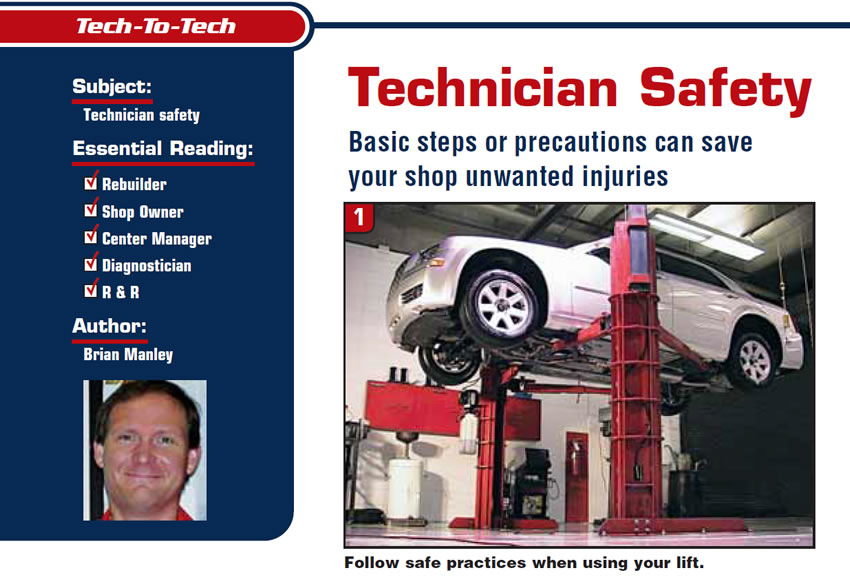Some Critters Have No Respect for the Law
In my opinion, the new Dodge Charger is one sweet ride; turn it into a police cruiser and it looks fast and intimidating just sittin’ on the side of the road. When our local sheriff dropped off his patrol car, it still looked impressive; however, the service-engine lamp and supplemental-restraint lamps were both illuminated, and there was a noticeable seat-of-the-pants misfire. This charger was currently pretty lame, and we pulled her directly into our “Emergency Room” (Figure 1).
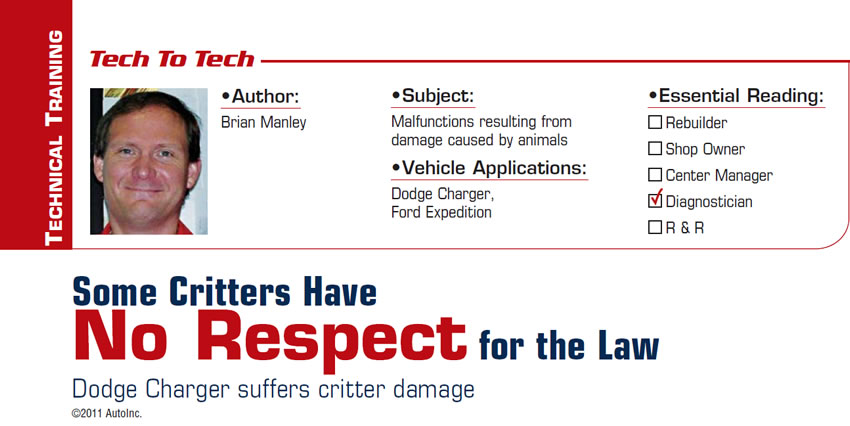
Finding Info Is Easier than Ever
Even old data can be found online
I have noticed lately that many familiar sources of information have some amazing features that allow us to save diagnostic time, as well as space on our bookshelves.

Deal with High Current and Intermittent Failures
Tips for troubleshooting intermittent failures and no-starts
What is your knee-jerk reaction when a vehicle rolls into your bay with the following concern: intermittent no-start? Personally, I usually like to know the make and model of the vehicle so I can tag it with a pattern-case failure (and I will revisit this point a little later), but this can often lead me to dangerous and time-wasting conclusions.
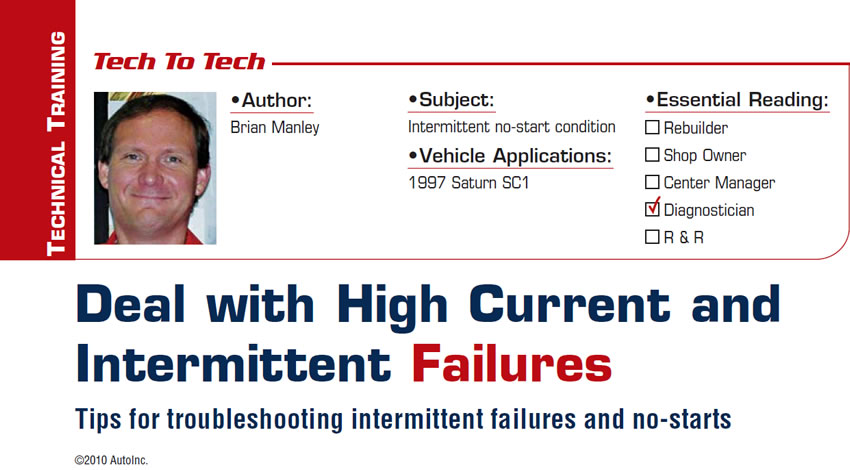
What is ‘Fretting Corrosion’?
You may have heard the term fretting corrosion recently and wondered what is going on with this odd-sounding phrase. Fretting is defined by Merriam-Webster as “to pass away the time,” but it also means “to gnaw, chew or corrode,” and it is the second definition that can cause technicians to spend too much time experiencing the first. Fretting corrosion can cause time-consuming intermittent failures in a myriad of vehicle systems, and it can be difficult to find.
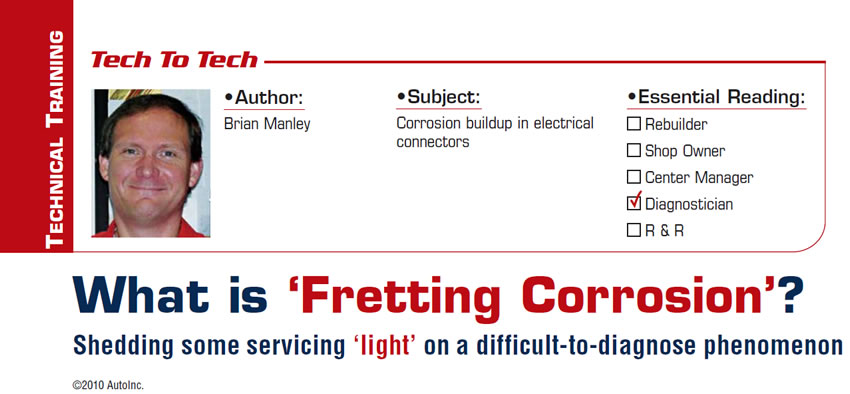
Those Pesky Lean-Condition Codes
This particular vehicle gave us two codes: P0171 and P0174. It is important to note that neither of the codes was current; they appeared only under “Memory Codes.” In a situation like this, I look at freeze-frame data, and we had the following data snapshot from when the code set: vehicle speed, 38 mph; coolant temperature, 189°F; long-term fuel trim for both engine banks was at 14% and 17%; engine speed, 1,803 rpm (Figure 2).
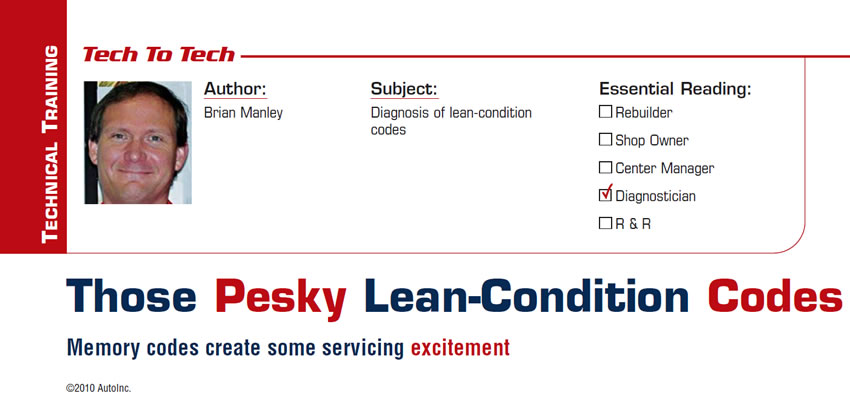
Getting Down to Business
I have been in this business a long time, and I still relish the feeling when I find the fault and fix the car. The root cause is the critter I’m always on the prowl for, and I will use any weapon I can find to bag that beast. That often means extra hours and every resource in my shop; however, I have been fortunate lately to catch some interesting issues fairly quickly by using the correct tool. Following are some situations I’ve encountered recently. Which tool would you use to correct them?
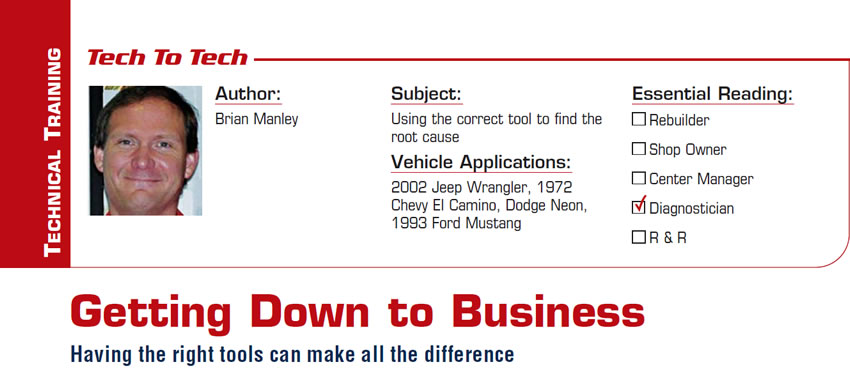
Adventures in engine cooling
The coolant level in the overflow was “full”; however, the level in the radiator was a half gallon low. Even after I topped off the radiator, the engine overheated after running for only 10 minutes. The cooling fan worked, and the temperature of both radiator hoses indicated that the thermostat was wide open. I wondered if there was a circulation issue such as a water pump that decided to fail, or a radiator with internal blockage. The radiator and coolant both seemed clean, and I observed flow when I peered into the radiator neck.
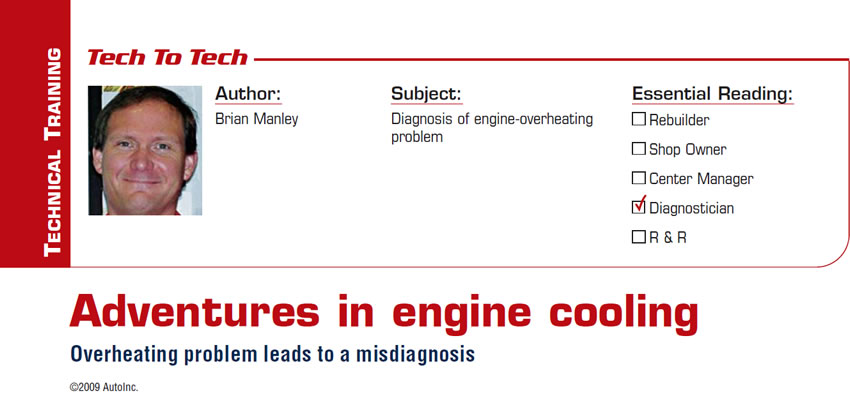
Simple Tips for Technicians
During certain lessons in our training facility, we impart many tips and tricks to our students. Often simple and always handy, these useful “nuggets” reduce headaches, save money and keep us safer. I’ve accumulated these tips during the 15 years that I worked as a full-time technician as well as during the 14 years that I’ve been an automotive instructor. Over the course of my automotive-service career, I have been fortunate to pick up many of these helpful hints from forums, fellow technicians and publications.

Just When You Think You’ve Seen It All …
Once I found the termination of the ground wires, I could not believe where they were bolted – not to a clean engine ground but to the motor side of the starter motor! That’s right: When the starter motor was cranked, 12 volts was applied to the ECU ground wires. This explained perfectly why the spark disappeared when the starter was cranked but returned when I let off the key.

The Difference Between Ordinary and Extraordinary Service
Quality cannot be compromised when cars are repaired, and customers should never be surprised the way my wife was when picking up her truck. If we have to wait for the “right” clip, or even weld, grind, tap and drill a part to ensure it is “right,” we need to communicate that information to the customer so they can make an informed decision. We all need to be diligent about the “little things” when we finish a job. Who wants to have the “Check Engine” light pop on or have parts fall off on their way home?
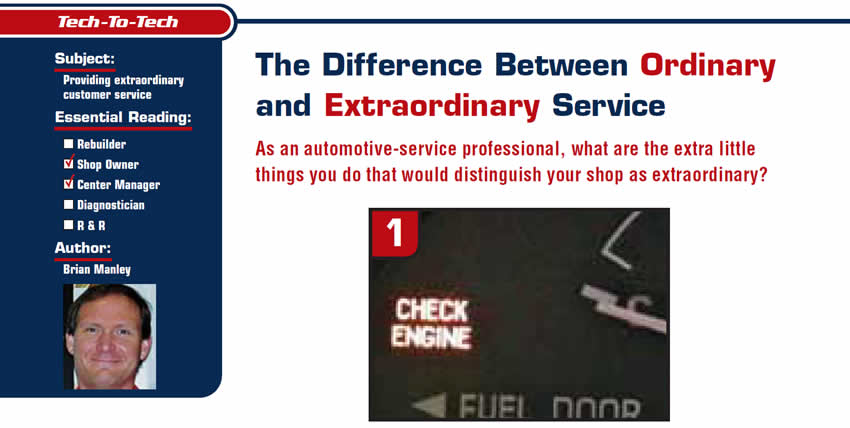
Tips, Tricks that Work
Let’s face it: Sometimes bad things happen to good technicians. Have you ever found yourself in the situation where you are trying to fix a problem, only to create a new one? I have popped the hood to check for a vacuum leak and, in the process, created a vacuum leak by snapping a plastic port off. In this month’s column, I will share a handful of cool tricks and tips that I’ve picked up over the years from co-workers, classes and forums.
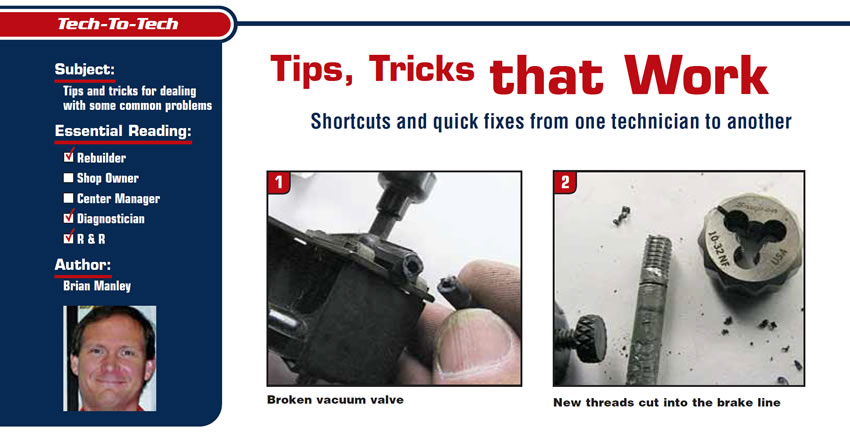
Technician Safety
How honest are we with ourselves in regard to our safety practices? Do we occasionally find ourselves cutting corners or ignoring safety practices in our bays?
